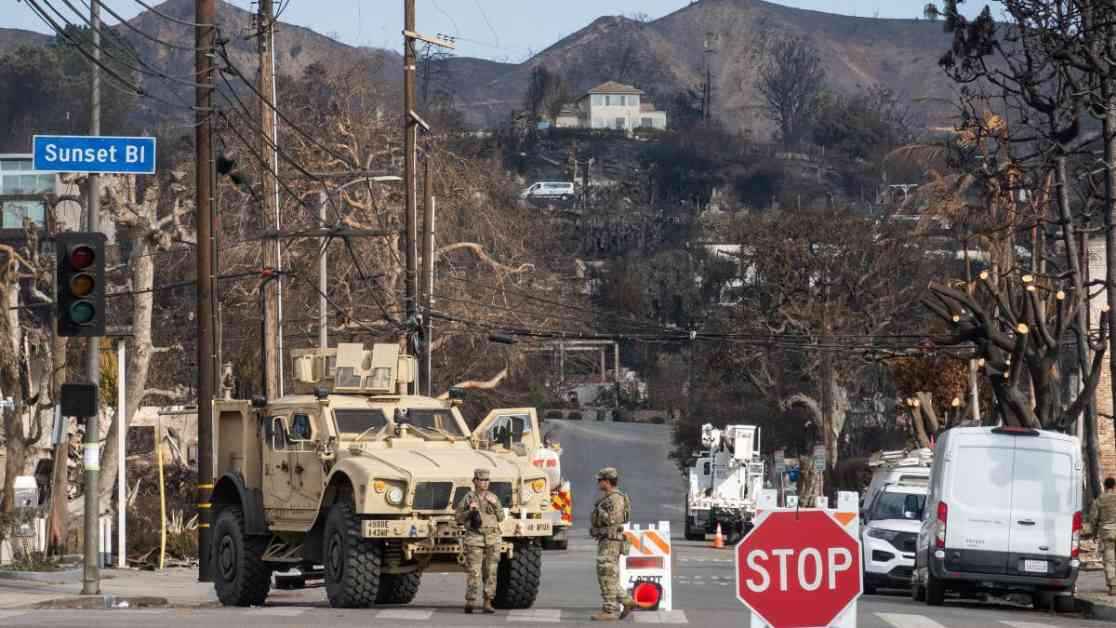Title: Catastrophic Losses: L.A. Suffers $350M in Damages from Fires and Windstorms
In a devastating turn of events, the recent wildfires ravaging through Pacific Palisades and other areas of Los Angeles have left a trail of destruction, resulting in an estimated $350 million in damages to public infrastructure. The heart-wrenching loss includes streetlights, recreation centers, and a library reduced to ashes, according to a comprehensive city report.
Initial estimates presented to the City Council this week shed light on the grim reality of the situation. City Administrative Officer Matt Szabo revealed that the damage assessment from the first four days of the fires has been submitted to the Federal Emergency Management Agency (FEMA) to seek potential reimbursement for the fire- and wind-related devastation. Szabo cautioned that these figures are preliminary and likely to escalate as more assessments are conducted in the coming weeks.
The report underscored the staggering impact of the Palisades fire, with over 6,700 structures destroyed and 904 others damaged, primarily concentrated in Pacific Palisades. The Department of Water and Power bore the brunt of the destruction, facing nearly $76 million in damages to its power distribution system. Similarly, sanitation infrastructure, including pumping plants across multiple locations, suffered damages totaling nearly $48 million. Among the tragic losses was the Pacific Palisades Public Library, estimated at $55 million.
FEMA traditionally aids local governments in disaster recovery by reimbursing 75% of the damage costs. However, in a rare move during the final days of the Biden administration, federal officials agreed to cover 100% of debris removal and emergency responses to the wildfires and accompanying windstorm, provided the work is completed within 180 days of the city’s emergency declaration. Despite the financial relief, the city faces an additional $24 million in emergency response costs incurred during the initial 10 days of the wildfires, mainly stemming from fire and police services.
As the city grapples with the mounting expenses, concerns arise about FEMA’s stance under the new Trump administration. President Trump recently issued an executive order emphasizing withholding federal funds from “sanctuary” jurisdictions that impede immigration enforcement. However, officials maintain that Los Angeles’ sanctuary law does not conflict with federal mandates but rather safeguards city resources from being utilized for immigration enforcement activities.
To mitigate the strain on the city’s emergency reserve, officials aim to avoid depleting the funds by borrowing from alternative sources until federal aid materializes. This strategic approach mirrors the city’s response during the pandemic emergency, where borrowed funds were utilized to support critical services like COVID-19 testing. The city’s emergency reserve, currently at $320 million, accounts for about 4% of the general fund budget, which sustains essential services such as police patrols and emergency responses.
Recognizing the urgent need for recovery efforts, the City Council approved the establishment of an ad hoc committee dedicated to overseeing windstorm and wildfire recovery initiatives and managing the allocation of state and federal assistance. Councilmember Traci Park, representing Pacific Palisades, emphasized the committee’s commitment to not only rebuilding but also reinstating public trust in the city’s emergency and disaster response system. By conducting meetings in impacted communities, the committee aims to facilitate resident engagement and ensure their voices are heard in the reconstruction process.
Amidst the chaos and devastation, Los Angeles stands resilient, united in its determination to rebuild and restore hope in the face of unparalleled challenges.


